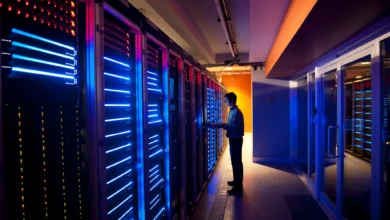Emerging Space Technologies: The Future of Space Exploration

Introduction
The space industry is undergoing a revolution, driven by emerging space technologies that are reshaping how we explore the cosmos. From reusable rockets and AI-powered satellites to lunar colonization and space tourism, rapid advancements are making space exploration more accessible, efficient, and ambitious than ever before.
Governments, private companies, and research institutions are investing heavily in these emerging space technologies, aiming to push the boundaries of human knowledge and expand our presence beyond Earth. In this article, we will explore the latest innovations that are defining the future of space exploration.
1. Reusable Rocket Technology: Cutting Costs & Expanding Access
One of the most significant breakthroughs in emerging space technologies is the development of reusable rockets. Traditionally, rockets were discarded after a single launch, making space travel extremely expensive. However, companies like SpaceX, Blue Origin, and Rocket Lab have introduced rockets that can return to Earth, be refurbished, and launched again.
✅ SpaceX’s Falcon 9 & Starship: These rockets can land vertically and be reused multiple times, significantly reducing launch costs.
✅ Blue Origin’s New Shepard: Designed for space tourism, this reusable rocket offers short suborbital flights for civilians.
✅ Rocket Lab’s Electron: This small satellite launcher is moving toward full reusability.
By making spaceflight more cost-effective, emerging space technologies like reusable rockets are enabling more frequent missions to the Moon, Mars, and beyond.
2. AI & Machine Learning in Space Exploration
Artificial intelligence (AI) and machine learning (ML) are playing a crucial role in emerging space technologies, allowing for smarter data analysis, autonomous navigation, and improved mission efficiency.
🚀 NASA’s AI-powered Rovers: The Perseverance and Curiosity rovers on Mars use AI to navigate rough terrain and conduct scientific experiments autonomously.
🚀 AI in Satellite Communications: AI-driven satellites analyze weather patterns, track deforestation, and optimize internet connectivity.
🚀 Predictive Maintenance: AI helps detect spacecraft malfunctions before they occur, preventing mission failures.
AI is essential for deep-space exploration, where real-time human intervention is impossible due to communication delays. Future space missions will rely heavily on AI to operate efficiently in distant locations like Mars, Europa, and interstellar space.

3. Satellite Mega-Constellations: Global Internet Coverage
Companies like SpaceX (Starlink), OneWeb, and Amazon (Project Kuiper) are launching thousands of small satellites into low Earth orbit (LEO) to provide high-speed internet access worldwide.
📡 Benefits of Satellite Mega-Constellations:
✅ Improved internet connectivity in rural and remote areas
✅ Faster communication for military, aviation, and maritime industries
✅ Enhanced disaster response by providing real-time satellite imagery
However, the rise of satellite mega-constellations raises concerns about space debris and orbital congestion, prompting research into space traffic management systems.
4. Space Tourism: The Beginning of Commercial Space Travel
One of the most exciting emerging space technologies is space tourism, allowing civilians to experience space travel.
🚀 Key Space Tourism Companies:
✅ Virgin Galactic: Offers suborbital spaceflights for passengers.
✅ Blue Origin: Successfully launched space tourists on its New Shepard rocket.
✅ SpaceX: Plans to send private citizens on orbital and lunar missions.
As technology advances and costs decrease, commercial space travel will become more mainstream, eventually leading to hotels in space and lunar vacations.
5. Next-Generation Propulsion Systems
Traditional chemical rockets have limitations, prompting the development of advanced propulsion systems for faster and more efficient space travel.
🚀 New Propulsion Technologies:
✅ Nuclear Thermal Propulsion (NTP): Uses nuclear reactions to generate thrust, reducing travel time to Mars.
✅ Ion Thrusters: Already used by NASA for deep-space missions, providing efficient long-term propulsion.
✅ Solar Sails: Harness sunlight for propulsion, eliminating the need for fuel.
These propulsion systems are essential for long-duration missions to Mars, asteroids, and beyond.
Also Read: AI-Driven Automation: Transforming the Future of Business

6. Space Colonization: Preparing for a Future Beyond Earth
Humanity’s long-term survival depends on space colonization, making it a top priority in emerging space technologies.
🌕 Lunar Base: NASA’s Artemis program aims to establish a permanent Moon base by the 2030s, serving as a gateway for future Mars missions.
🪐 Mars Colonization: SpaceX’s Starship is being designed to transport humans to Mars, with the goal of creating a self-sustaining colony.
🏗 3D Printing in Space: Using in-situ resource utilization (ISRU), 3D printers will build habitats using lunar or Martian soil instead of transporting materials from Earth.
The dream of humans living beyond Earth is closer than ever, thanks to advances in emerging space technologies.
7. Space Debris Removal: Cleaning Up Earth’s Orbit
With thousands of satellites in orbit, space debris is a growing threat. Emerging solutions include:
✅ Laser-Based Systems: Ground-based lasers can alter the trajectory of debris.
✅ Robotic Arms & Nets: Spacecraft designed to capture and remove defunct satellites.
✅ Self-Deorbiting Satellites: New satellites are designed to burn up in Earth’s atmosphere after use.
By addressing space junk, we can ensure sustainable space exploration for future generations.
The Future of Emerging Space Technologies
The next decade will bring groundbreaking advancements in space technology, including:
🚀 Artificial Gravity Spacecraft – Simulating Earth’s gravity for long-term missions.
🚀 AI-Powered Space Missions – Fully autonomous spacecraft exploring the outer planets.
🚀 Interstellar Exploration – Concepts for reaching nearby star systems like Alpha Centauri.
🚀 Space-Based Solar Power – Harvesting solar energy from space to power Earth.
The future of emerging space technologies is bright, with limitless possibilities for exploration and innovation.
Conclusion
Emerging space technologies are transforming the way we explore the universe. From reusable rockets and AI-powered satellites to lunar bases and space tourism, these advancements are paving the way for humanity’s next great frontier.
As governments and private companies invest in space innovation, the dream of interplanetary travel, human colonization of Mars, and deep-space exploration is becoming a reality. 🚀
🌌 The future of space is not just a possibility—it’s happening now! 🌍✨



